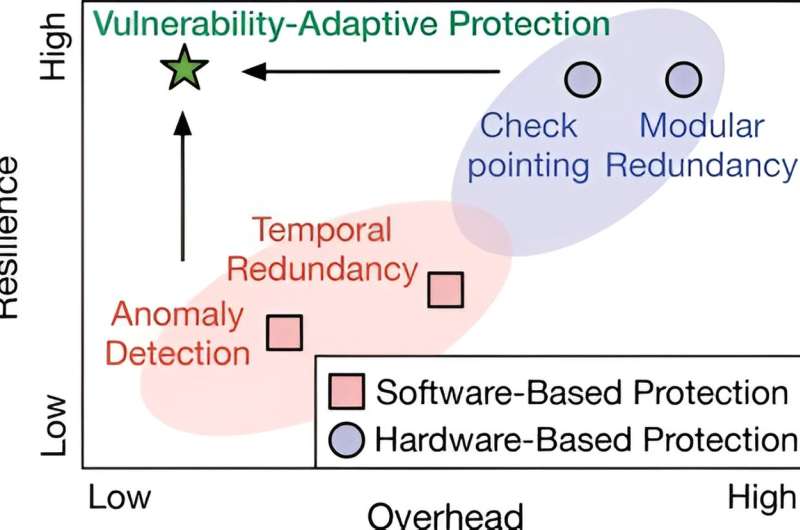As the autonomous machine industry continues to grow, with millions of self-driving cars and billions in annual drone sales projected by 2025, ensuring safety and reliability is paramount. However, the traditional “one-size-fits-all” approach to protection has led to increased costs. Researchers propose a new, adaptive strategy that tailors protection to the specific vulnerabilities within an autonomous system, optimizing both reliability and affordability. This innovative approach could revolutionize the design of autonomous machines, making them more resilient and cost-effective. Autonomous cars and drones are at the forefront of this technological shift.

Getting Creative with Defense Plans
In the past, manufacturers of autonomous machines have provided “one-size-fits-all” protection, a tactic that might work, but also can contribute to inflated costs. I mean, each Tesla actually uses two Full Self-Driving Chips (FSD Chips) to create redundancy if one chip goes out of service; however, this also means production costs for the chips and cameras would be doubled.
But a team of researchers from the University of Rochester, Georgia Tech and the Shenzen Institute of Artificial Intelligence and Robotics for Society have suggested a broader, more flexible solution. The trick is to defend different zones of the autonomous system in different ways, depending on the characteristics and vulnerabilities of each zone.
The basic idea is that you apply different protection strategies to different parts of the system,” says Yuhao Zhu, an associate professor in Rochester’s Department of Computer Science. The technique is a bit polished as per the nature of software and hardware. This means we have to build different shields for the front end vs. back end of the software stack.
Custom Protection Per Vulnerability
For instance: in an autonomous vehicle, the part of the software stack that resides on the front end is involved in perceiving the environment (such as through cameras and LiDAR), while the back end processes this data to plan a route, sends commands to an actuator.
‘You don’t have to spend a lot of the protection budget in front because it’s fault tolerant by definition,’ Zhu said. “Conversely, there are not a lot of inherent protection mechanisms at the back end level, but securing the backend is important since its one which directly connects with all the mechanical parts in the vehicle.
On the front end, combatting anomalies can come in super cheap ways such as software solutions filtering out questionable data. More heavyweight protection schemes, such as checkpointing to save the state of the whole machine periodically (in order to recover from faults), or selectively duplicating critical modules on a chip, can be used for more vital back end.
AI-Driven Autonomous Systems — Dealing with the Implantation Vulnerabilities
One of the most significant challenges is in breaking the trend this research team has observed in autonomous machine software stacks that increasingly lean on neural network-based artificial intelligence. These AI models are typically comprised of one gigantic, unified neural network that directly processes sensor inputs outputs complex calculations and commands the actuator.
“On one hand, it benefits the mean performance significantly because when it works, which it does for most problems and trials, but doesn’t fail elegantly in the case of failure — failing doesn’t neatly point to a particular module,” recalls Zhu. It improves the average scenario but makes it much worse on the tail, which we want to minimize.
Through this approach to protection, which is more directed and adaptive in response to the vulnerabilities of AI-powered autonomous systems, researchers say they will be able to contribute both reliability as well as cost containment. This might lead to cheaper, more reliable autonomous machines for any consumer or manufacturer.
